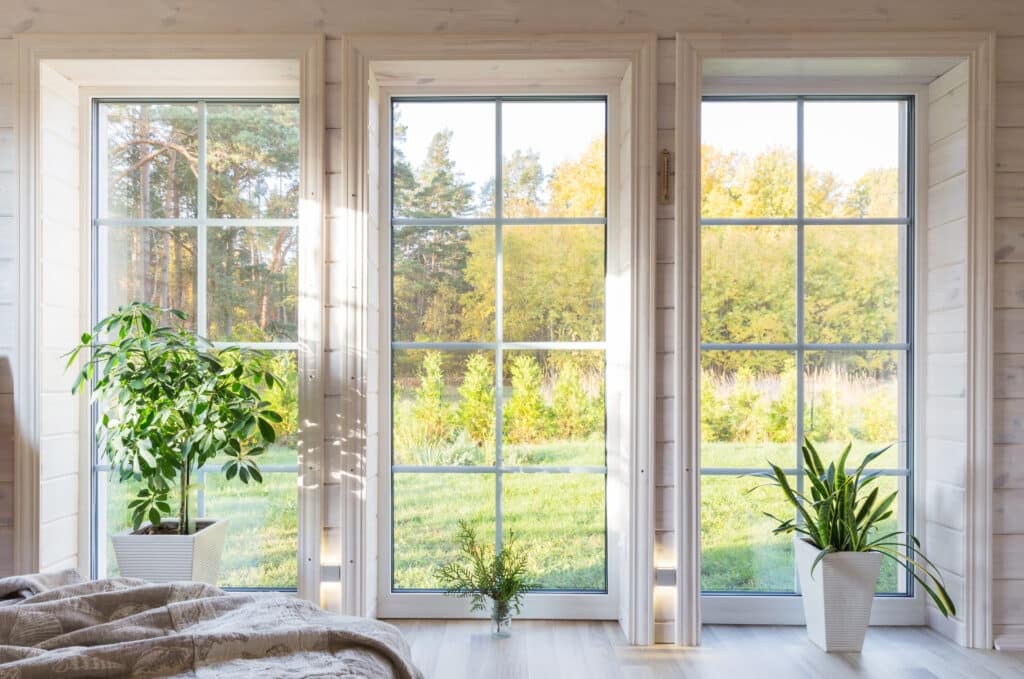How Much Does Window Screen Replacement Cost?
The cost of a window screen can vary depending on the type and material of your screen.
Window Replacement Screen Cost by Type
A standard-sized fiberglass window screen is the cheapest and most common type of window screen. Specialty screens are more expensive but can meet different homeowner needs. For example, a solar screen reduces sun glare and blocks UV rays while still allowing you to see outside. Security screens let in fresh air and keep out bugs like standard screens, but they can also prevent intruders from entering your home.
*Pricing data sourced from Today’s Homeowner.
Window Replacement Screen Cost by Material
Fiberglass window screens are the cheapest and most common type of window screen material. Fiberglass is flexible and will not dent or crease, making it a suitable material for standard windows. Polyester is also a good choice if you want a flexible screen material that offers more durability than fiberglass, although it is more expensive.
Metal window screens can be made of aluminum, stainless steel, copper or brass. Metal screens are more expensive than other types, but extremely durable and won’t become brittle or crack over time. These materials are best for windows or screen doors in high-traffic areas, especially if you have pets or children that could rip through a more flexible screen. Metal window screens are also ideal for coastal areas where the humidity can wear out standard screens more quickly.
*Pricing data sourced from This Old House.
Factors That Affect Window Screen Replacement Cost
The cost of your window screen replacement can vary depending on several factors:
- Window size: Because companies typically price screens by the square foot, larger windows will cost more to rescreen.
- Window accessibility: Accessible windows are quicker and easier for professionals to install. If your window is not on the ground level or is obstructed by landscaping or other barriers, your installation will cost more.
- Screen material and type: Common screen materials like fiberglass are cheaper, though they can be less durable than premium materials like stainless steel or brass. Additionally, a custom window screen designed to fit your specific needs will cost more.
- Screen brand: High-end window brands like Renewal by Anderson offer windows and window screens at a premium cost, but you’re paying for quality materials, experienced installers and customization options.
Additional Considerations
Window screen prices vary depending on where you live. If the cost of living in your area is above the national average, you will likely pay more for your window screens.
When replacing your window screens, you may also need to replace the screen frames if they are no longer in good condition. This can add an average of $30 to $100 per window.
If you need to replace your windows entirely, it can be time-effective to include screen replacements. We recommend speaking with a window specialist to receive a cost estimate. You can read about our top-rated window brands to learn more.
DIY vs. Professional Window Screen Replacement
Beginners can usually install a new window screen with some simple tools in an hour or less, and most hardware stores sell screening kits to get you started. Installing your own window screens can save you an average of $15 to $70 per window.
However, hiring a professional can save you time, and some screens are more difficult to replace than others. For instance, second- or third-story window screens are more difficult to access, and professionals have the necessary equipment to replace screens safely. Additionally, screens made of metal like aluminum or stainless steel are inflexible and less forgiving to size and fit into window frames than fiberglass.
Ultimately, whether you want a DIY or professional screen replacement depends on how much time and money you’re willing to commit to the project and the complexity of the job.
Tips for Cost-Effective Window Screen Replacement
No matter your project, there are ways to reduce the total cost of your window screen installation.
- DIY your window screen installation: Home improvement stores like Home Depot sell window screen installation kits so you can save on labor costs and install screens yourself. However, more complex installations may require a professional.
- Buy in bulk: Ask your window screen installer if the company offers a discount when you purchase screens for multiple windows.
- Repair instead of replace: Window screen repairs can patch small holes in your screen mesh so your window screens last longer, saving you money on replacements.
- Rescreen existing frames: In most cases, you can remove and replace the old screening on an existing window screen frame, lowering your installation cost.
- Choose materials that fit your needs: If you have kids or pets, you may choose durable window screen materials for high-traffic areas to avoid ripping. Otherwise, cheaper fiberglass screens are suitable for most windows.
- Gather installer quotes: If you choose to have a professional installer replace your window screens, we recommend you get estimates from multiple companies to discuss your options and compare prices.
The Bottom Line
Every window screen replacement project is different, and how much you pay largely depends on your screen material and type. However, you can expect to pay anywhere from $30 to $150 for a standard-size, fiberglass screen with installation. High-end materials, large windows and specialty screens can cost an average of $350 to $850 each.
We recommend speaking with a window professional, such as Pella or Renewal by Andersen, to receive a custom quote for your window screen project.
Faith Wakefield is a writer based in North Carolina. She holds economics and English degrees from UNC Chapel Hill, and her work has been featured on EcoWatch, The World Economic Forum and Today’s Homeowner. In her free time, she loves to binge-watch personal finance videos on YouTube, collect books and spend time in nature.
Tori Addison is an editor with over five years of experience in the digital marketing industry. Her includes communications and marketing work in the nonprofit, governmental and academic sectors. A journalist by trade, she started her career covering politics and news in New York’s Hudson Valley. Her work included coverage of local and state budgets, federal financial regulations and health care legislation.
Read the full article here














